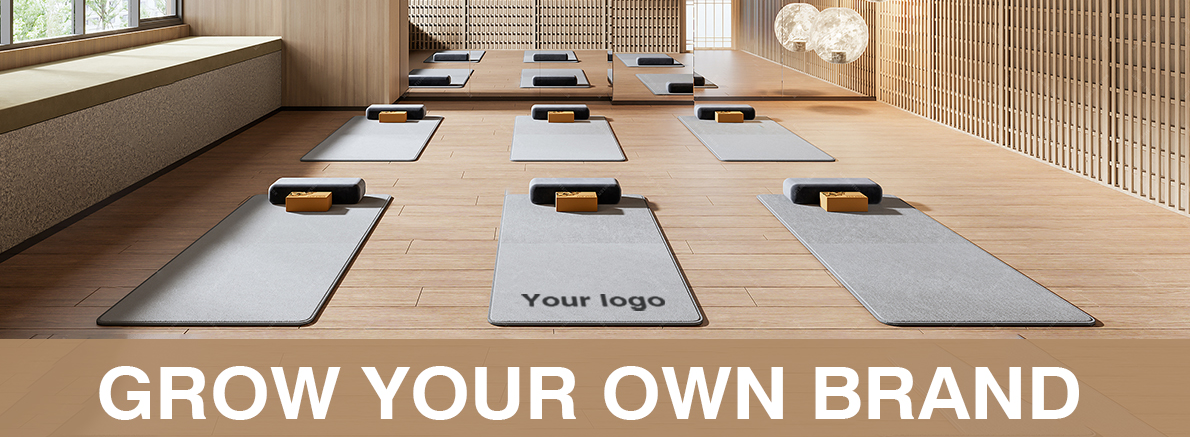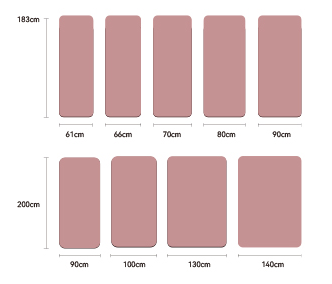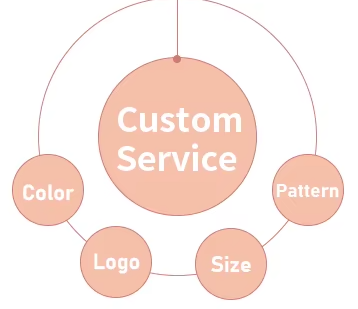I’ve noticed many brands putting logos on yoga mats. I think this is a growing trend. For 2025, I believe it’s more than just about appearance in the studio. custom yoga mats, from my experience, offer a big advantage for businesses. They help your brand gain visibility. They also foster connections with your audience. Plus, they can demonstrate your company’s support for environmental principles. Designing a custom mat might appear simple at first. Yet, I’ve observed that many overlook a key element. This element, in my view, is what makes a mat exceptional…

Why Custom Yoga Mats Matter in 2025
In 2025, I believe custom Yoga mats with logos are really important for businesses. They help companies get noticed when the market is crowded. From my experience, these mats are great tools for promoting your brand. They help people see your business in busy gyms and studios. I think it’s smart because yoga and wellness are so popular now. Custom mats give companies a fantastic way to connect with their audience.
Boosting brand awareness and customer loyalty
I’ve seen that custom yoga mats do more than just show your logo; they help build a community. When people use mats that match their style or what a brand stands for, I find they feel a stronger link. Brands that use these personalized mats often tell me they see more loyal customers. These customers come back more often, which is what every business wants, right?
The rise of eco-conscious fitness gear
People care a lot more about our planet these days. So, I see many shoppers looking for yoga mats that are kind to the Earth. For instance, mats made from cork or natural rubber are becoming popular. I recommend using sustainable materials for custom mats. These attract people who care about the environment. It also clearly shows your brand is serious about sustainability, which I think is a big plus. I suggest companies can use this trend. They can offer mats that are personal and good for the Earth. This approach will attract many different types of customers.
Great for giveaways, product lines, or exclusive memberships
I find custom Yoga mats are great for promotion. They are ideal for event giveaways. I also recommend them for your product lines or as special perks for memberships. For example, a yoga studio could offer a branded mat as part of a premium membership package. In my experience, businesses that offer branded mats see more customer interaction. They attract new clients and give current ones something extra of value. I think this really helps a business grow and builds lasting relationships.
The 6-Step Design Process for Custom Yoga Mats
I find that making custom yoga mats follows a simple six-step process. I believe this process helps your mats match your brand. It also helps them connect with the people you want to reach.
Define Your Goals
First, I suggest you identify why you want custom mats. Are they for selling? For promotions? Or for your own team’s branding? Knowing this clearly will help you make good design and production decisions, in my experience.

Understand Your Target Audience
It’s really important to know who you’re making these mats for. I can’t stress this enough. For example, I think designs for yoga beginners will be different from those for experienced yogis. Your custom mats need to show what these groups like and what they need. This makes their yoga time better.
Choose the Right Material
I recommend choosing a material that fits your brand’s values. Also, think about what your customers expect. Here are some common choices I’ve seen:
| Material | Pros | Cons |
|---|---|---|
| PVC | Affordable, durable | Not eco-friendly |
| TPE | Lightweight, recyclable | Slightly less grippy when wet |
| Natural Rubber | Great grip, sustainable | Heavier, higher cost |
| PU (Polyurethane) | Ultra grip, premium feel | Sensitive to oils/sweat |
| Cork + Rubber | Eco-friendly, antimicrobial | Limited design flexibility |

When you pick, I suggest you think about how well the yoga mat grips. Also, consider how long it will last and its effect on the environment.
Select Size, Thickness & Texture
Standard sizes: 68″x24″, 72″x26″, or even longer for taller users.

Thickness options:
-
3mm – Lightweight and portable
-
5mm – Balanced comfort and support
- 6mm+ – Extra cushioning for sensitive joints
Texture impacts grip and style—some mats have a smooth surface, others a ridged or tactile finish.
Balance comfort, portability, and performance to suit your target audience.
Design Your Logo & Artwork
I think it’s important to create a logo that looks good on a yoga mat. Think about these design points:
– Color scheme: Will you use one color or many colors?
– Style: Do you prefer simple designs or more detailed ones?
For design tools, I recommend using Canva, Adobe Illustrator, or Figma. Make sure your logo truly shows what your brand is about.
Find a Reliable Yoga Mat Manufacturer
Next, I suggest you check out possible manufacturers. Look at things like their Minimum Order Quantity (MOQ). Also, check for certifications like ISO or SGS, and find out how long they take to make the mats. I’d compare makers near you with those overseas, for example, in China, India, and Vietnam. From my experience, it’s wise to always ask them important questions about how they work and their quality standards.
Order Samples & Finalize Production
Getting samples is very important, in my opinion. It lets you check the quality before you order many. The usual steps and times involve:
– Getting the sample approved.
– The time it takes to make all the mats.
– How long shipping will take.
I also recommend thinking about packaging and how you’ll brand the mats. And, perform quality checks. This way, you can be sure the final product is up to your standards before you introduce it.
In conclusion, I believe if you follow these six steps, you can create great custom yoga mats. These mats can make more people aware of your brand. They can also connect well with the people you want to reach.
Expert Opinion:
“As a yoga studio owner and product development consultant, I’ve seen custom yoga mats transform. They are no longer just promotional giveaways. Now, I view them as powerful ambassadors for a brand. The six-step process outlined here is, in my opinion, spot-on. I’ve noticed many businesses overlook how critical material selection is for their target audience. For premium studios with dedicated yogis, I suggest investing in natural rubber or cork. These clients prioritize sustainability and excellent grip. For fitness centers or corporate gifts, TPE is an option I highly recommend. It offers a great balance of customization and affordability. Your yoga mat becomes an extension of your brand. How the mat feels to customers shapes their view of your business. From what I’ve seen, the most successful Dcustom mat campaigns happen when brands ensure material quality aligns with their core company values.“
———— Sarah Matthews , Yoga Studio Owner & Product Development Specialist. She has 15+ years of experience in wellness branding.
My Top Picks: Tools for Designing & Ordering Your Custom Yoga Mats
If you want to create great-looking custom yoga mats, good tools for design and production are essential. I want to share some resources that, in my experience, can help you with this.
Design Tools I Recommend
To design your yoga mat, I suggest looking at these popular platforms:
– Canva: I find it easy to use. It’s great for simple designs and logos.
– Figma: This is a good choice for team design projects, particularly when you collaborate with others.
– Adobe Illustrator: I recommend this if you need advanced features for detailed artwork and logos.
With these tools, you can easily see how your custom logo and artwork will look. This helps make sure they fit your brand well.
My Go-To 3D Preview/Mockup Generators
I think using 3D preview tools really improves the design process. These platforms let you see your custom yoga mat with your designs on it: – Placeit: You can create realistic mockups of your yoga mats with this tool. – Smartmockups: This helps you create high-quality images of your designs on different products, like yoga mats.
I find these mockup generators are very helpful. They let you check the overall look before you make the mats.
Where I’d Look for Manufacturers
Finding a trustworthy yoga mat manufacturer is very important. I suggest you check out these platforms to find a good production partner: Alibaba: This is a major marketplace. You can find manufacturers here, both in your area and from other countries. Faire: This platform connects brands with retailers. It also links to manufacturers who make unique goods. Printify: I find this great for dropshipping custom items. They offer print-on-demand for yoga mats too. – Thomasnet: This is useful for locating approved suppliers and manufacturers in North America.
I believe using these platforms helps. You can compare different manufacturers, look at prices, and make sure the quality is good.
Top Yoga Mat Manufacturers to Consider in 2025
Planning to get custom yoga mats in 2025? I think you should focus on quality, sustainability, and price when choosing a manufacturer. Based on my experience, these are key factors. Here are some top yoga mat manufacturers I suggest you keep in mind:
| Manufacturer | Location | MOQ | Material Focus | Notes |
|---|---|---|---|---|
| Liforme | UK | High | Eco-friendly, PU/Rubber | Premium, branded only |
| Wuhan FDM Eco Fitness Product Co., Ltd | China | Low | TPE, Cork, Natural Rubber | OEM/ODM, fast delivery |
| Xiamen LDK | China | Low | TPE, PU | Great for logo customization |
| Manduka (OEM) | Asia | Medium | Natural rubber | Trusted in yoga communities |
| Earth Yoga | India | Medium | Cork & Organic Cotton | Handmade, eco-conscious |
Factors to Consider When Choosing a Manufacturer
-
Minimum Order Quantity (MOQ): Manufacturers have different MOQs. I recommend you pick one that fits what you need.
-
Material Specialization: I suggest you find manufacturers who focus on materials that match your brand’s quality and eco-friendly goals. For instance, if your brand promotes natural products, I’d look for a supplier specializing in organic cotton or natural rubber.
-
Customization Options: I believe it’s important that the manufacturer gives you design freedom. This helps you create unique branding for your mats.
-
Production Time: Quick production is very important for your promotional items or new product releases. Based on my experience, you should always confirm how long production will take before you place your order.
-
Quality Assurance: I recommend you check if the manufacturer holds certifications. For example, ISO or SGS certifications show they meet industry quality standards.

If you find the right manufacturer, I think your custom yoga mats will look great. They will also match your brand’s values and connect well with your customers.
My Pro Tips for Your Custom Mat Project
If you’re planning a custom yoga mat project, I have some key tips for you. Based on my experience, these will help you succeed.
Test Print Your Logo on Different Materials

Before you place your final order, I suggest you test your logo on different materials. This way, you can see how your design looks on various textures and finishes. Check carefully how well the logo sticks and how easy it is to see. From my perspective, picking the right material will make your mats look great and work well.
My Recommendation: Start with a Small Batch to Test the Market
I recommend starting with a small order of mats. This lets you see if customers are interested and get their opinions. I believe this is a good method to find out if you need to make any changes. You can do this before you invest in a lot of stock.
Confirm Color Codes and File Formats with Your Supplier
I always suggest you double-check the color codes and the file types your supplier needs before they start making the mats. This helps make sure your branding looks the same everywhere and matches what you imagined. Missing a small detail here can cause problems with the final mats, so I think it’s worth the extra check.
If Sustainability Matters to Your Brand, Ask About Eco-Certifications
If being sustainable is important for your brand, I recommend you ask about eco-certifications. For example, materials like natural rubber or cork might need specific certificates. These show they are genuinely kind to the environment. I think this shows you are serious about sustainability. Plus, customers who care about the planet will appreciate it.
Summary
I believe custom yoga mats with logos are very important in 2025. They help your brand get noticed in a busy market. From my experience, these mats are great promotional items. They increase what people know about your brand, especially in crowded gyms. With yoga and wellness becoming more popular, I think businesses can use custom mats to build stronger bonds with their customers.
Recap of the 6-Step Design Process
- Define Your Goals: I suggest you clearly state the purpose of your mats.
- Understand Your Audience: I recommend you create designs to suit the needs of different yoga practitioners.
- Choose Materials: I believe you should pick materials that match your brand’s values and what your customers expect.
- Select Size & Thickness: I advise matching the size and texture with your branding aims.
- Design Thoughtfully: Make sure your logo fits with your brand’s message and style. I feel this is very important.
- Find a Manufacturer: I suggest you select a reliable manufacturer who offers quality guarantees.
My final thoughts: I think custom yoga mats are a smart branding investment for 2025. They boost your brand identity and also support sustainability and personal choice.

